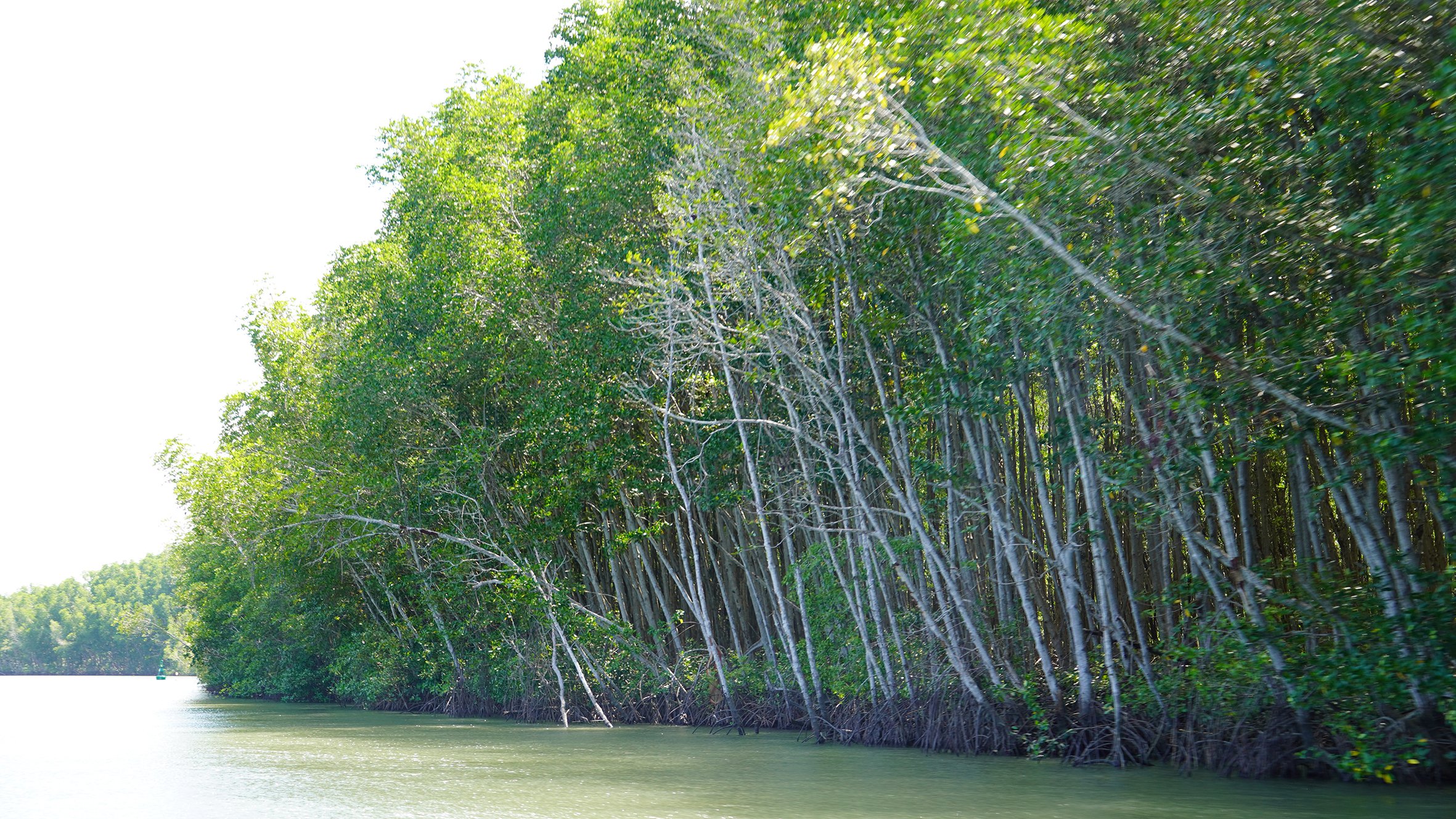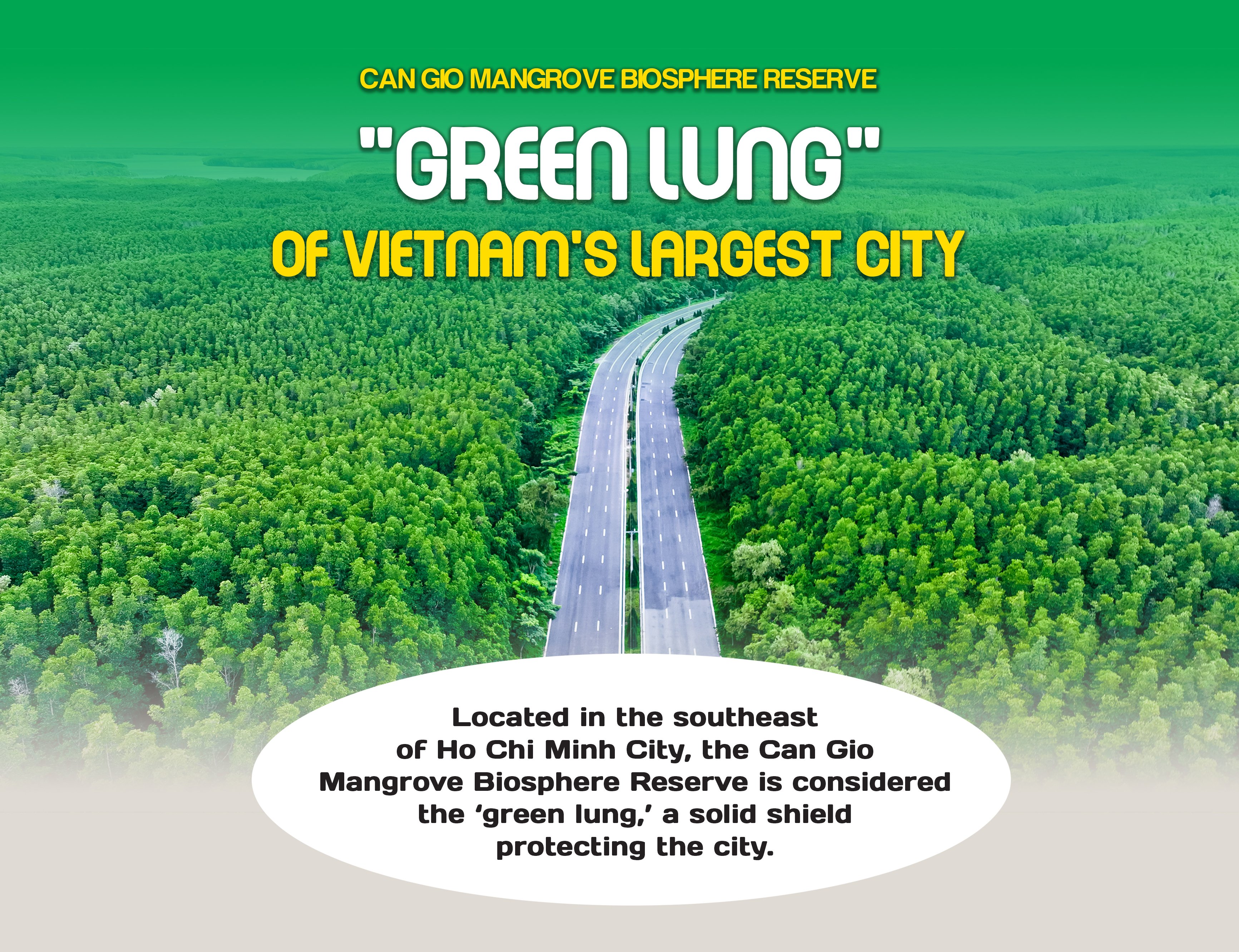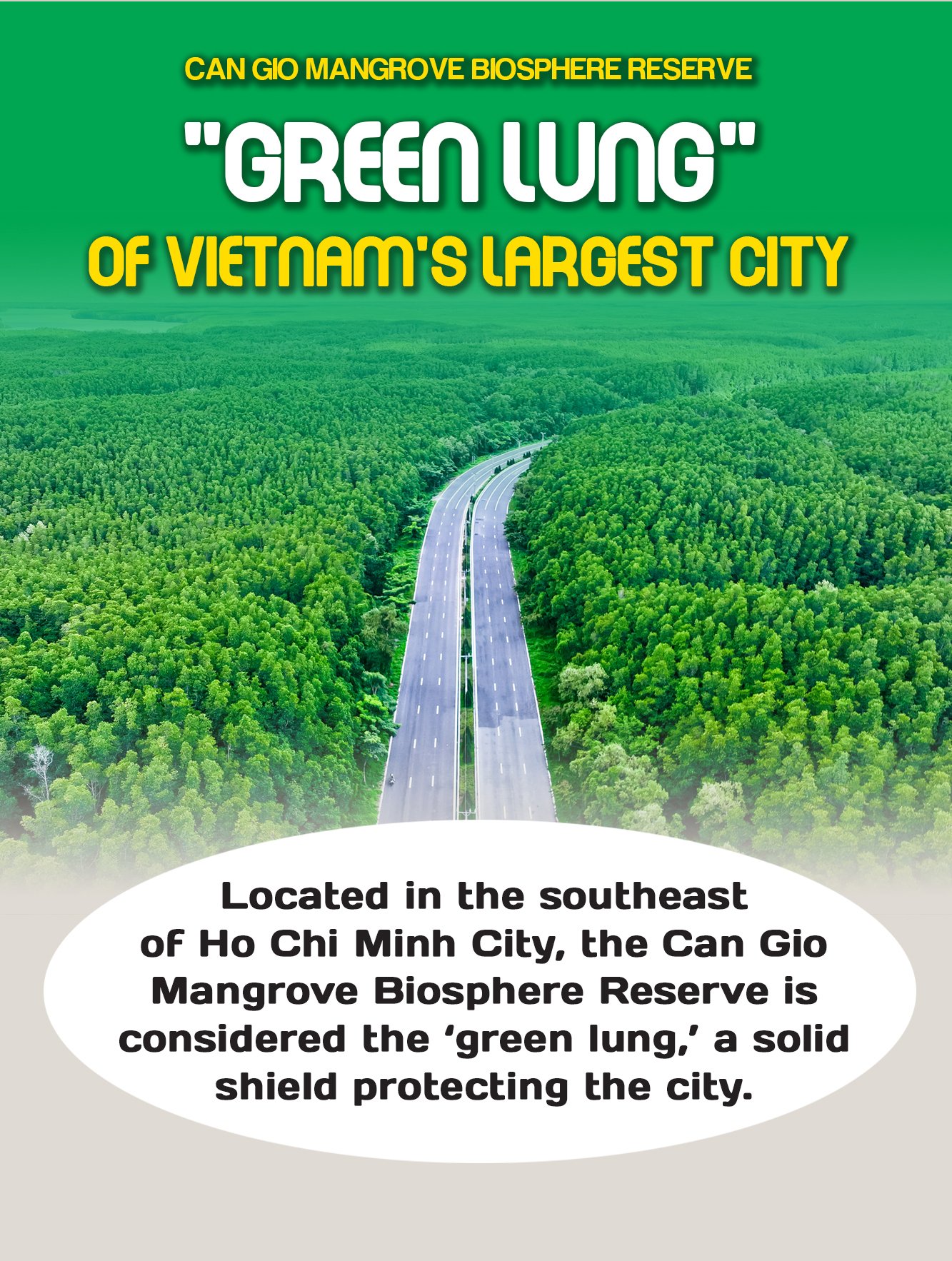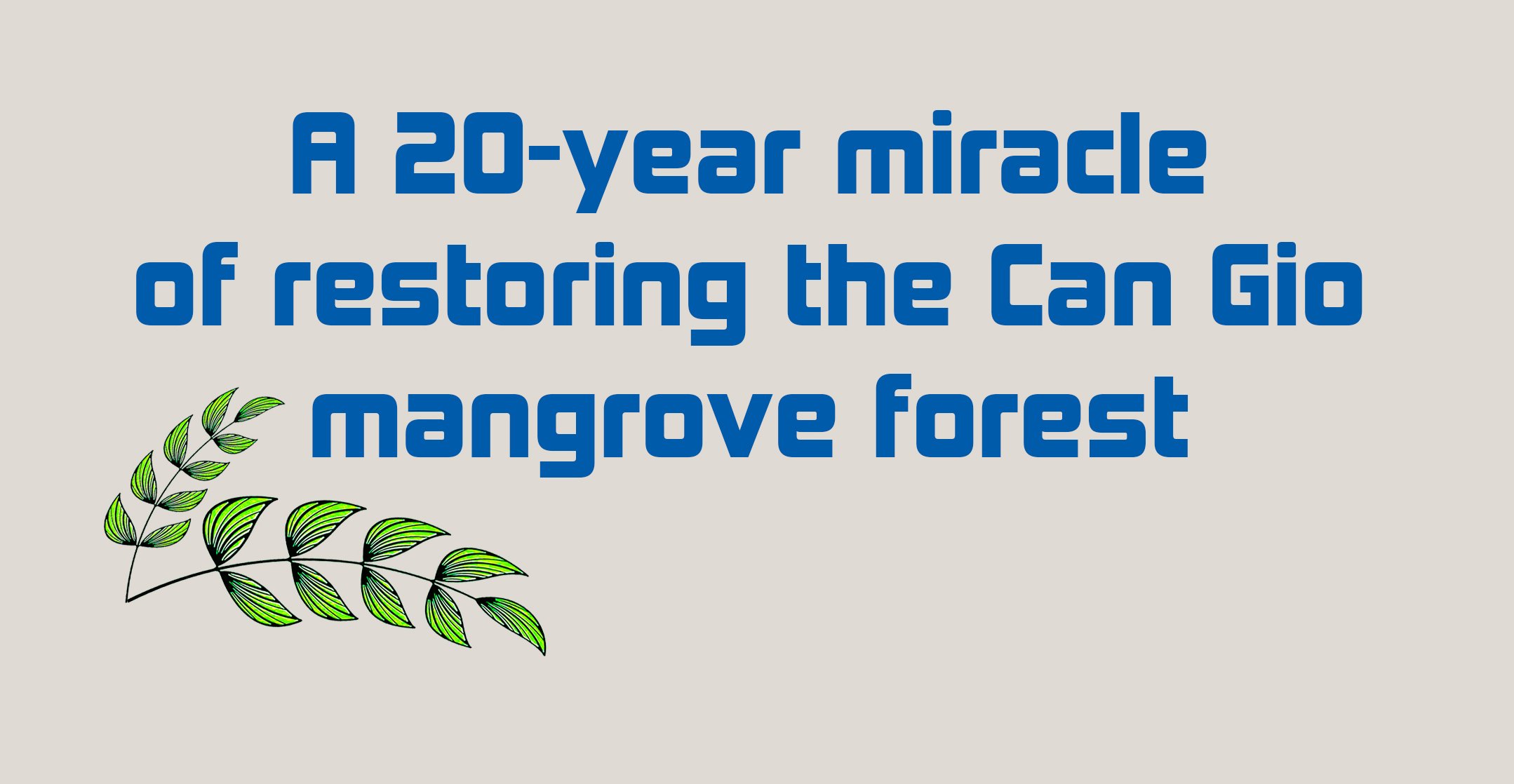
Not far from downtown Ho Chi Minh City lies a vast mangrove forest, known as the Can Gio protection forest. More than 25 years ago, the entire Can Gio protection forest area and the remaining administrative area of Can Gio district were recognized by UNESCO as the Can Gio Mangrove Biosphere Reserve. This was an outcome no one had imagined when embarking on the restoration of the Can Gio mangrove forest, which had been severely devastated during the war.
Previous survey documents indicate that before 1945, the Can Gio Mangrove Forest, also known as Sac Forest, was part of the extensive mangrove forests of Southeastern Vietnam, covering a total area of approximately 38,000 hectares. Prior to the war, this area was known for its tall, large mangrove trees and biodiversity of flora and fauna.
However, during the war, particularly in the 1965-1969 period, the Can Gio mangrove forest was nearly completely destroyed due to defoliants and other chemicals sprayed by U.S. military forces. In 1974, American scientists estimated that around 57% of the mangrove forest had died.
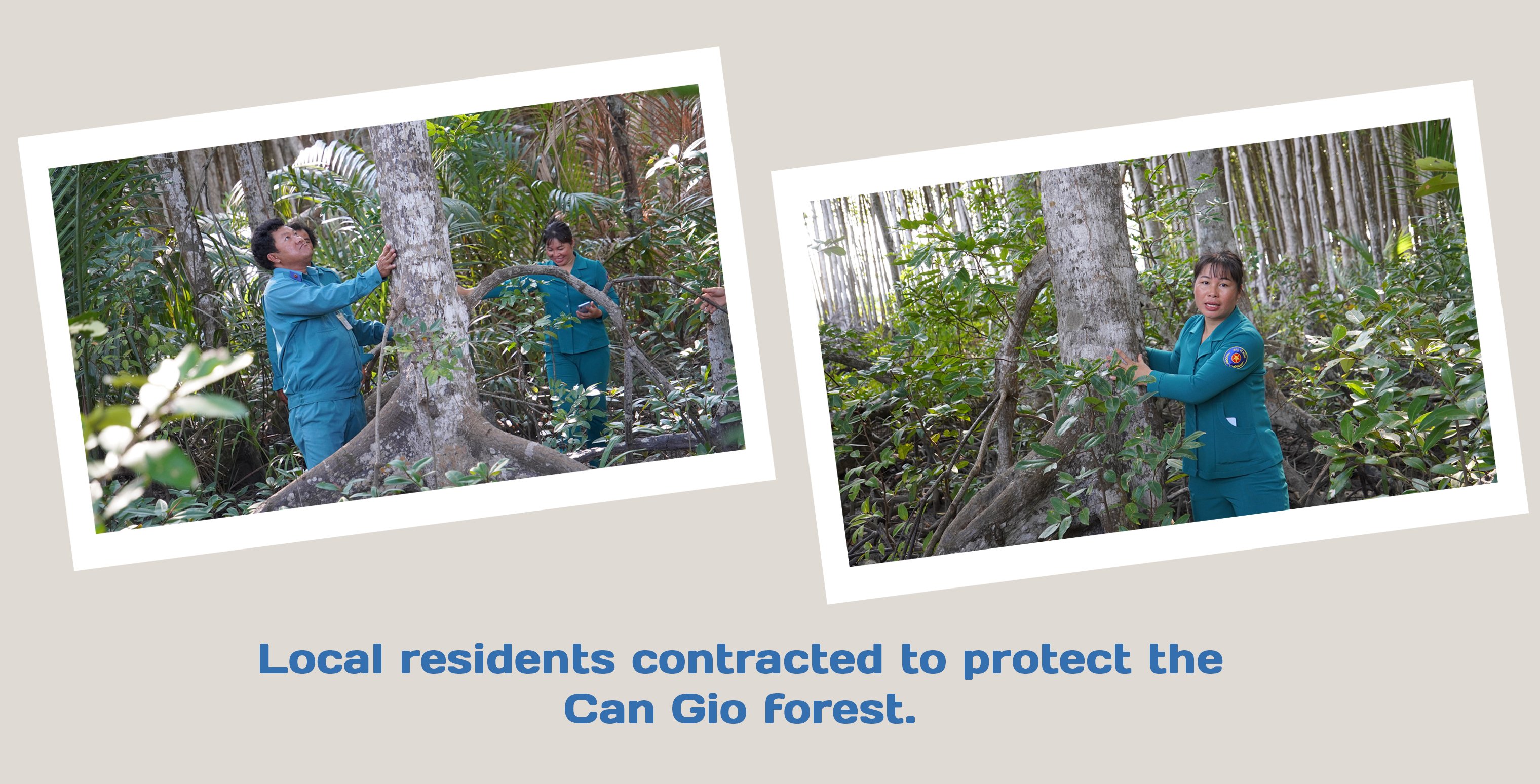
A tragic image of Can Gio during those years was its vast, lush mangrove forests transformed into barren land. Forest vegetation, terrestrial wildlife, and aquatic resources were virtually wiped out, and the ecological environment became severely polluted, seriously affecting the lives of local communities and surrounding areas.
The restoration of the Can Gio mangrove forest began in 1978, when Can Gio district (named Duyen Hai district) was administratively transferred from Dong Nai province to Ho Chi Minh City. At that time, the total mangrove and forestry land area was 34,468 hectares, including 5,588 hectares of forestry land, 10,000 hectares of barren land and cracked dry mud, 4,500 hectares of date palms, and 14,380 hectares of scattered shrubs with less than 40% coverage.
According to the Can Gio Mangrove Biosphere Reserve Management Board, when Ho Chi Minh City took over the district, the Can Gio mangrove forest was still being destroyed, as local residents cut down trees for firewood and construction. Additionally, the forest was further threatened by severe erosion along barren lands bordering rivers and canals, while coastal erosion intensified due to high tidal levels and the absence of protective green belts.
In response, the Ho Chi Minh City People’s Committee immediately established the Duyen Hai Forestry Enterprise under the Department of Forestry (now the Department of Agriculture and Environment) to urgently carry out the restoration of the Can Gio mangrove ecosystem.
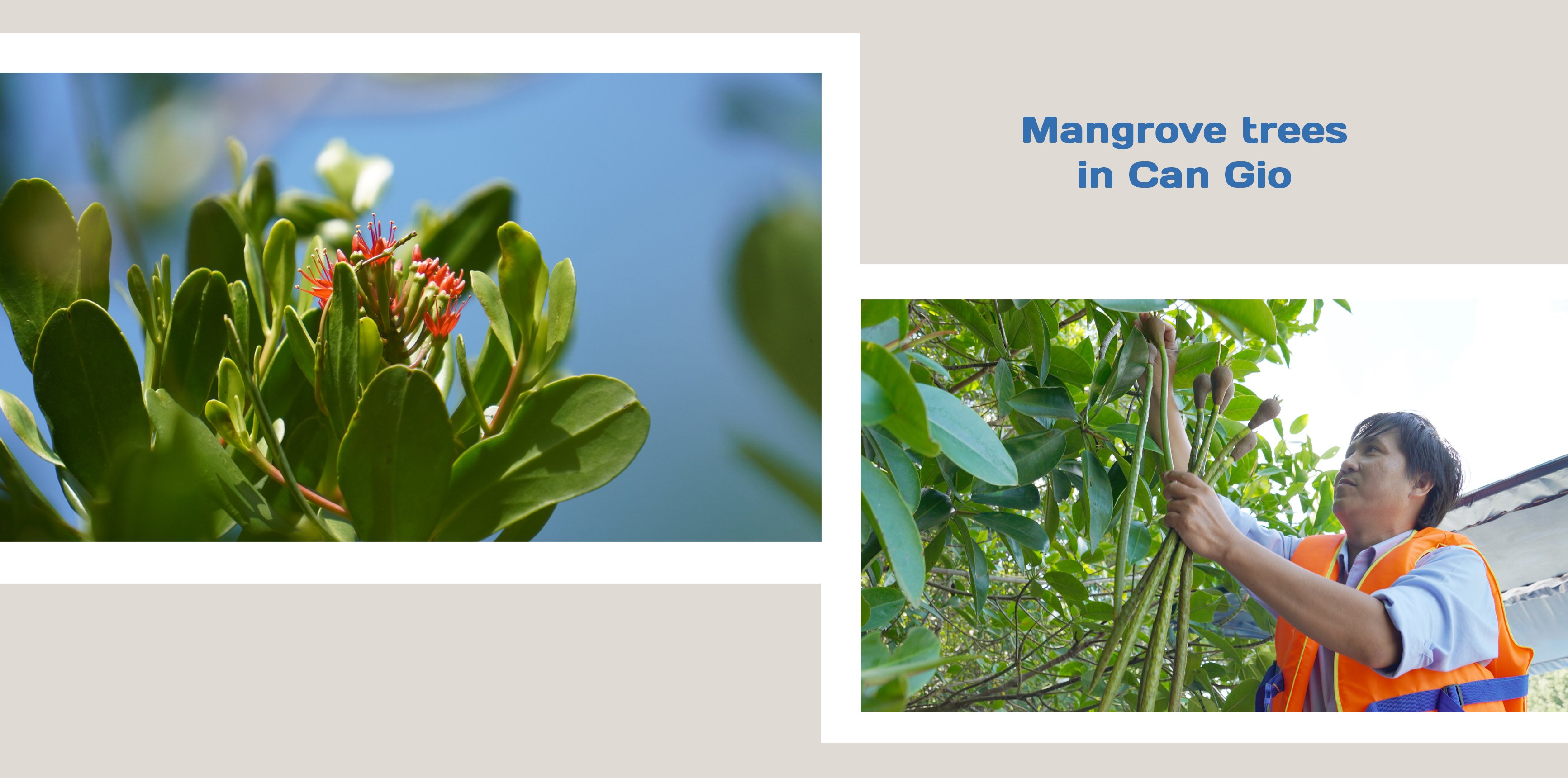
The restoration of the Can Gio mangrove forest aimed to improve the city’s ecological environment, mitigate storms and winds, protect the coastline, serve socio-cultural and economic development needs, enhance the livelihoods of local communities, support ecotourism in the coastal forest region, facilitate scientific research and education on coastal mangrove ecosystems, conserve rare wildlife species, and sustainably utilize valuable specialty resources from the mangrove forest such as shrimp, fish, and fresh air.
The city's requirement for the restoration of the Can Gio mangrove forest was to replant it within the shortest timeframe (20–30 years), strictly adhere to scientific and technical standards, and ensure rapid green cover with high-quality forest.
To achieve the planned progress, the Ho Chi Minh City People’s Committee mobilized human and material resources from all of Can Gio district and even urban districts. In the early years of reforestation, the workforce planting trees reached up to 6,000-8,000 people.
Dr. Huynh Duc Hoan, Head of the Can Gio Protection Forest Management Board, stated that during the war, the mangrove ecosystem was completely destroyed. Leading forestry experts believed that restoring it would take hundreds of years. However, in just 20 years, from 1978 to 1998, Ho Chi Minh City successfully restored the entire Can Gio mangrove ecosystem.
The restoration of the Can Gio mangrove forest in just 20 years can be considered a remarkable achievement by the government and people of Ho Chi Minh City. It laid the foundation for UNESCO’s recognition of the Can Gio district as the Can Gio Mangrove Biosphere Reserve on January 21, 2000. It was Vietnam’s first Biosphere Reserve, paving the way for the nomination and recognition of many other Biosphere Reserves.

The Can Gio Mangrove Biosphere Reserve is divided into three functional zones, including the core zone, the buffer zone, and the transition zone.
The core zone covers 6,134.43 hectares, with the function of conserving both natural and planted mangrove ecosystems and preserving landscapes and wildlife habitats, especially for waterbirds. The core zone also protects aquatic areas and mudflats along rivers and coastlines to enable natural regeneration of flora and fauna.
The buffer zone includes 29,152 hectares of forest land and 12,764 hectares of water surface. Its functions include restoring ecosystems based on dominant biomes, protecting the core zone, and providing a broader habitat for wildlife beyond the core area. This zone also helps shape natural landscapes and human cultural values to serve ecotourism while facilitating integrated forestry–fishery models and other agroecological practice.
The transition zone spans 13,228 hectares of forest land and 7,267 hectares of water surface, comprising the remaining areas of Can Gio district. Its function is to promote economic development and cooperation models with the participation of management agencies, economic entities, mass organizations, religious, cultural, and social groups, scientists, and educational institutions.
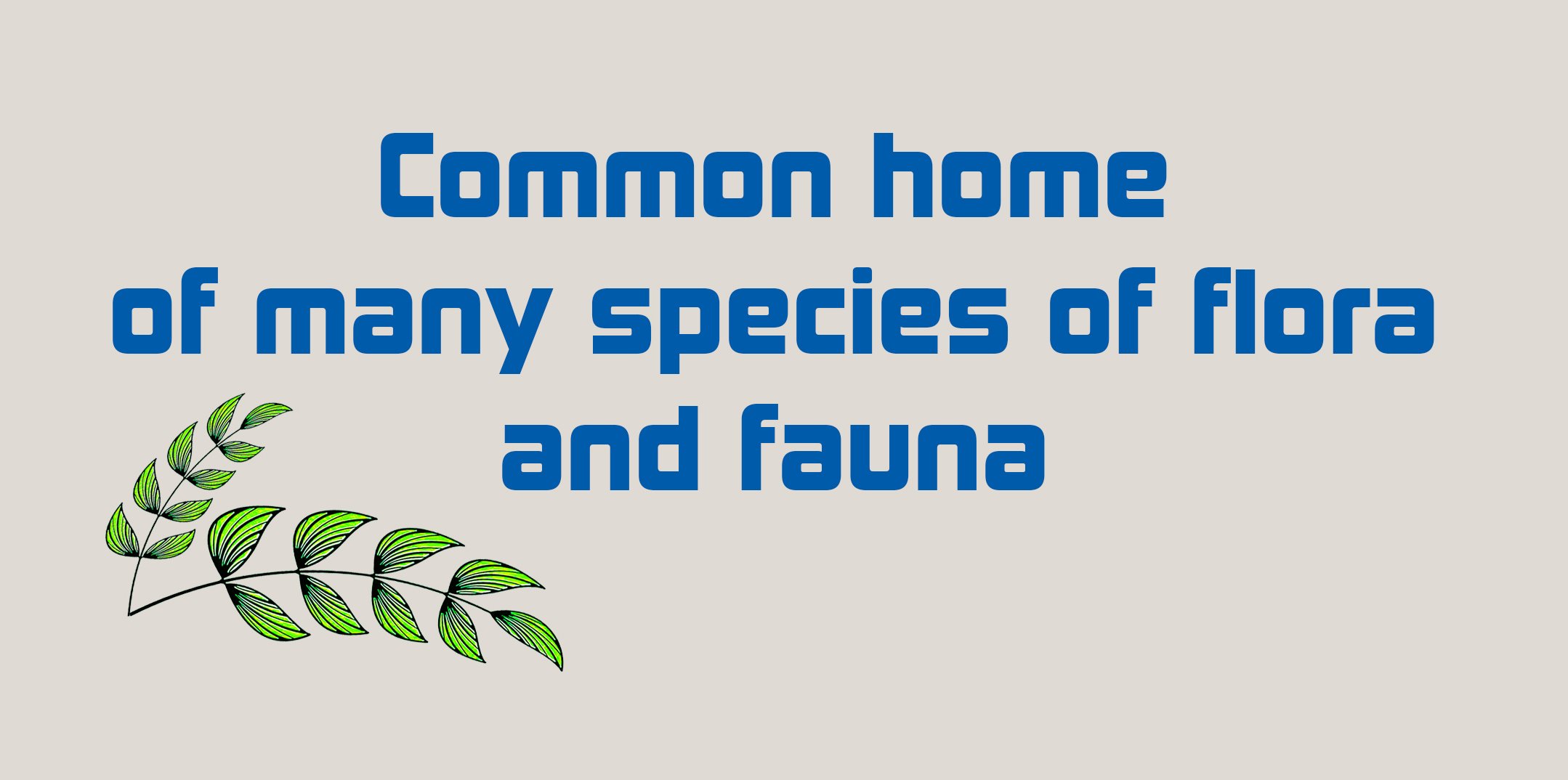
Over the past few decades, the stable development of planted forest ecosystems has provided favorable conditions for the recovery of natural forests in the Can Gio mangrove forest. The improved ecological environment and increasing biodiversity have encouraged the return of numerous wildlife species, such as monkeys, otters, pythons, wild boars, crocodiles, and bird species, to the Can Gio mangrove forest, once again making it a common home for thousands of plant and animal species.
The Can Gio Mangrove Biosphere Reserve is currently home to 318 species of higher plants, including 37 species of core mangrove trees, 56 species that contribute to the mangrove ecosystem, and 225 species of introduced mangrove plants.
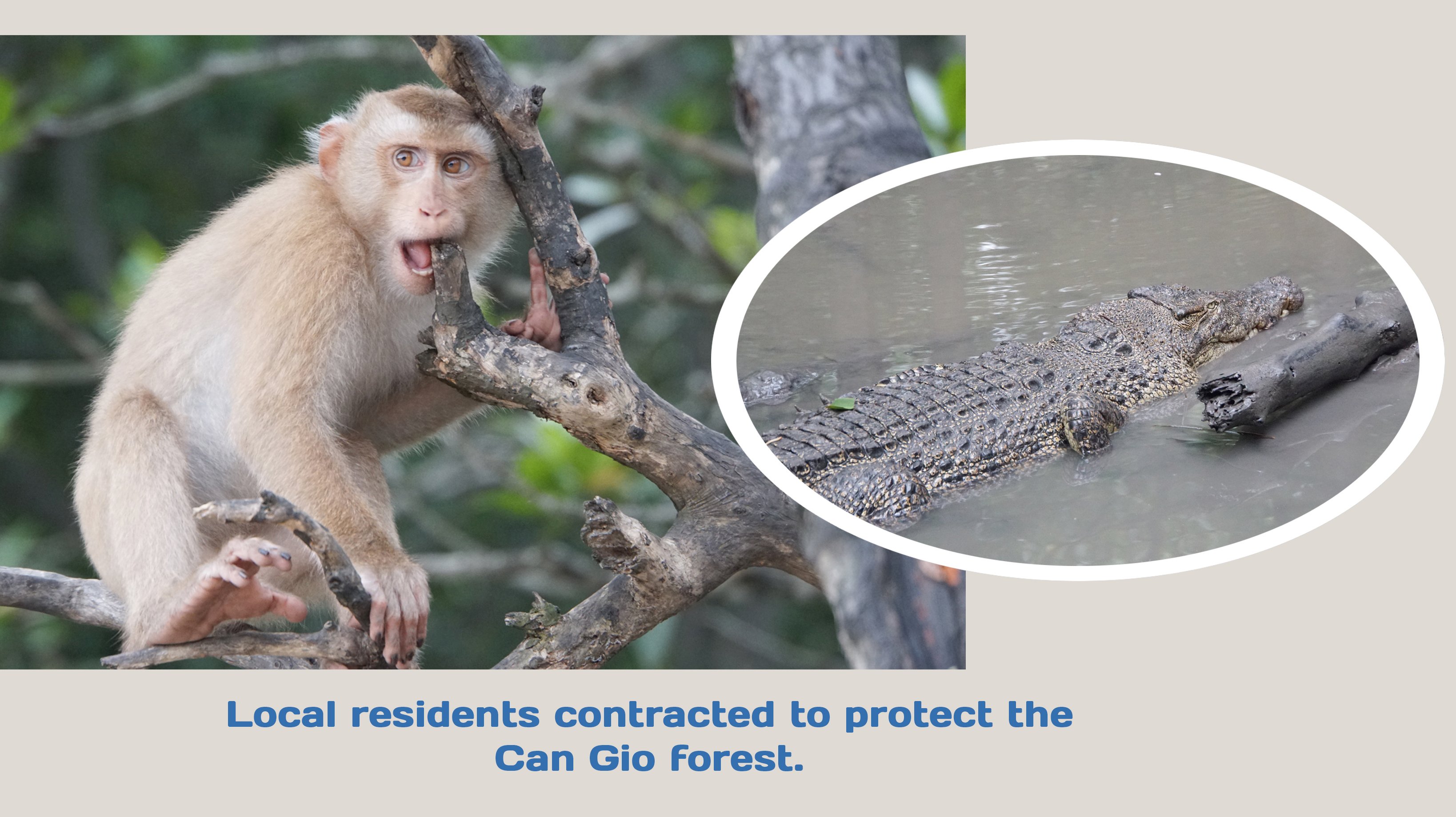
Regarding fauna, the Can Gio Mangrove Biosphere Reserve is home to 89 species of insects, 282 species of fish, 36 species of amphibians, 36 species of reptiles, 164 species of birds, and 35 species of mammals. For plankton, there are 66 species of zooplankton and 66 species of phytoplankton.
Among the plant species found in Can Gio, two are listed in Vietnam's Red Data Book (2007), including Lumnitzera littorea and Azima sarmentosa. As for fauna, nine rare animal species recorded in Vietnam's Red Data Book include the Eurasian otter (Lutra lutra), the small-clawed otter (Aonyx cinereus), the fishing cat (Prionailurus viverrinus), the long-tailed macaque (Macaca fascicularis), the spot-billed pelican (Pelecanus philippensis), the Oriental darter (Anhinga melanogaster), the spoon-billed sandpiper (Tringa guttifer), the king cobra (Ophiophagus hannah), and the banded archerfish (Toxotes chatareus).
According to Assoc. Prof. Dr. Vien Ngoc Nam of Nong Lam University in Ho Chi Minh City, the strong support and attention of governments at all levels in Ho Chi Minh City through investment programs, along with the participation of local communities in forest restoration and protection, have played a crucial role in safeguarding the Can Gio mangrove ecosystem, thereby facilitating the development of biodiversity.

With a total area of nearly 35,000 hectares, including more than 32,000 hectares of forest as of 2020, the Can Gio Mangrove Forest is considered the “green lung” of Ho Chi Minh City. It plays a vital role in absorbing harmful emissions from industrial production activities and fuel-powered vehicles while returning essential oxygen to the atmosphere to sustain human life. The forest also acts as a natural filtration system, purifying wastewater discharged from the inner-city districts and helping to reduce environmental pollution in Ho Chi Minh City and its surrounding areas.
According to Dr. Huynh Duc Hoan, the Can Gio Mangrove Biosphere Reserve plays a critical role for Ho Chi Minh City, particularly in the context of climate change. Located at the southeastern gateway of the city, the Can Gio mangrove forest serves as a protective shield for the mainland, guarding it against the threat of ocean waves. Experts have calculated that a 200-meter-wide mangrove belt can reduce wave height by 50% and wave energy by up to 90%. Thus, with a width of more than 20 kilometers from the sea to the mainland, the Can Gio mangrove forest acts as a solid shield for the city against sea level rise and climate-related impacts. Additionally, the forest is a significant carbon sink, storing vast amounts of carbon.
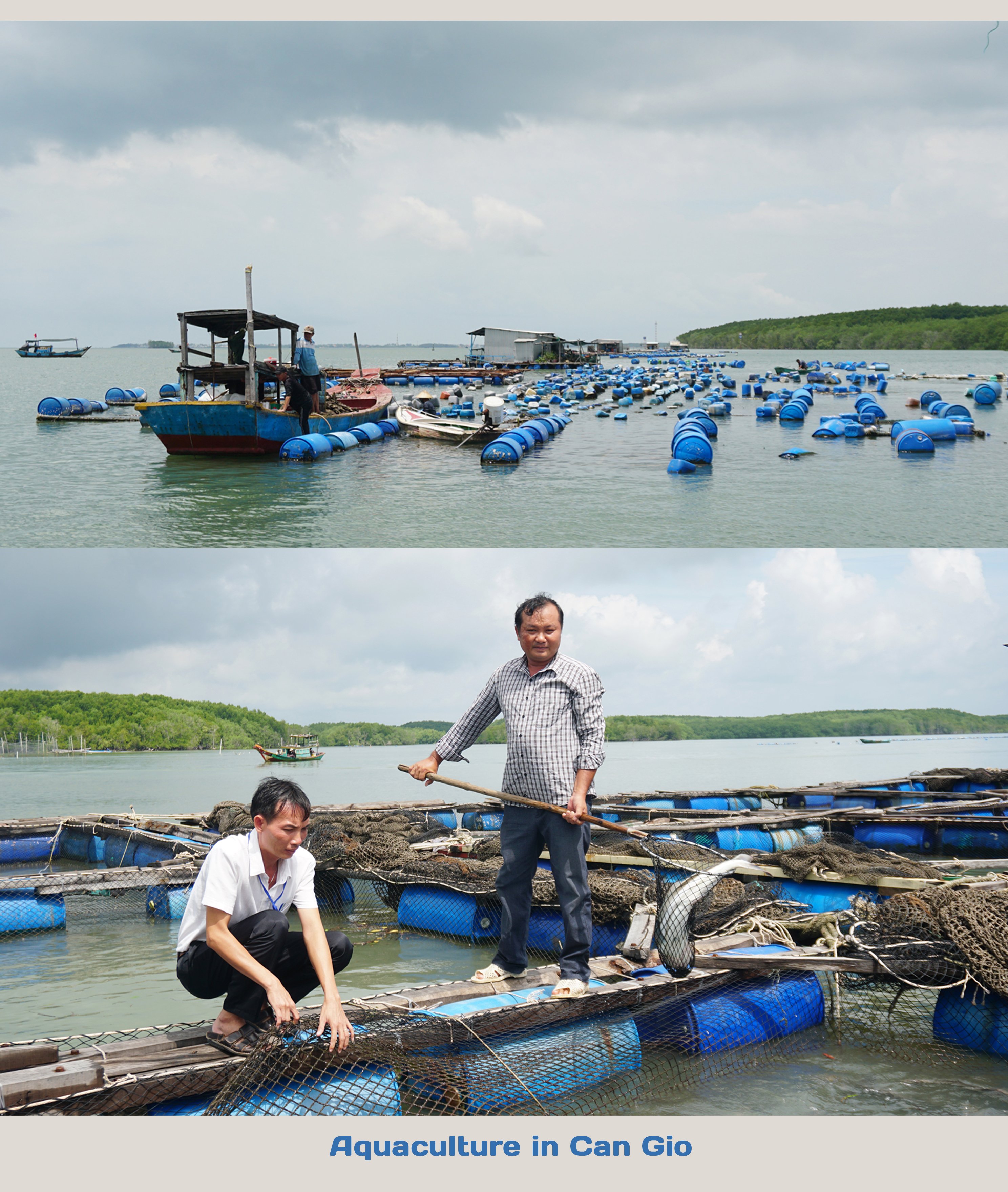
Located in the downstream basin of the Dong Nai–Saigon river system and bordering the provinces of Dong Nai, Ba Ria–Vung Tau, Tien Giang, and Long An, the Can Gio mangrove forest also provides rich aquatic resources for local communities in Can Gio district and neighboring regions.
Recognizing the immense value of the Can Gio Mangrove Biosphere Reserve, Ho Chi Minh City continues to reinforce conservation efforts for the Can Gio mangrove ecosystem as well as the entire biosphere reserve.
Among the solutions to protect the Can Gio mangrove forest, the city paid special attention to the forest allocation policy, assigning forest protection responsibilities to organizations and local households. According to Dr. Nguyen Chi Thanh, Director of the Center for Forest and Wetland Research, community involvement is the most effective solution for conserving and developing coastal protection forests and the Can Gio Mangrove Biosphere Reserve.
To help ensure a stable livelihood for households contracted to protect the Can Gio mangrove forest, the Ho Chi Minh City People’s Committee has consistently adjusted and increased forest protection funding over the years.
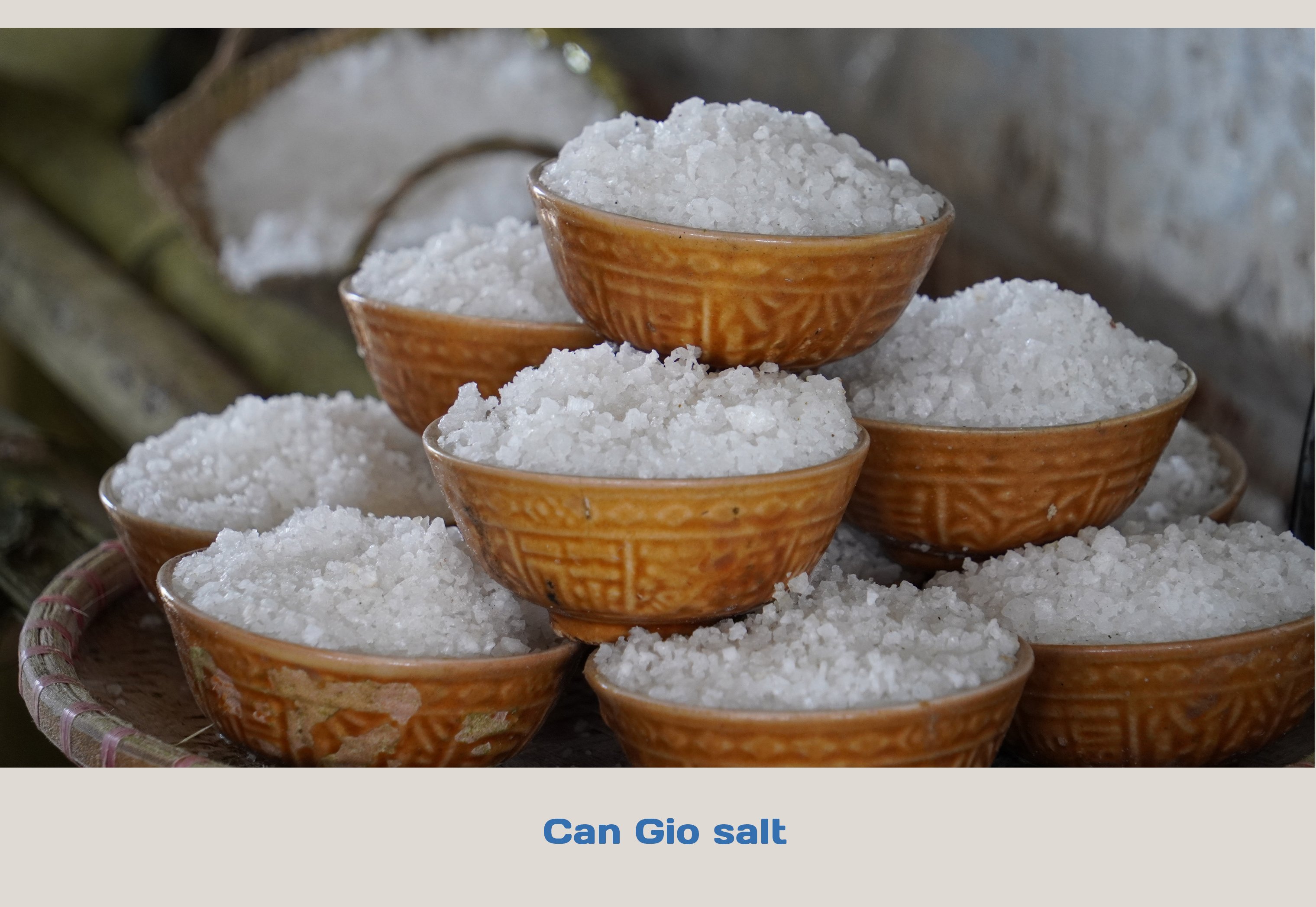
Notably, at the end of 2024, the Ho Chi Minh City People's Council issued a resolution on a special payment policy for organizations and individuals contracted to protect coastal protection forests. As of early 2025, the contracted payment per hectare has more than doubled compared to the previous rate, thereby encouraging local households to remain committed to the forest protection contracts in the Can Gio mangrove area.
Furthermore, since 2010, the Ho Chi Minh City’s People Committee has allowed the Can Gio Protection Forest Management Board to implement the project "Investing in Technical Infrastructure to Support the Management and Development of the Can Gio Mangrove Forest." This project includes the construction of new, solidly built guard stations for all households contracted to protect the Can Gio protection forest. Each station covers an area of 40 m² and is equipped with an upgraded 150W solar power system. These improvements provide forest guardians with better living and resting conditions, helping to ensure their long-term health.

The Can Gio Mangrove Biosphere Reserve covers the entire natural area of Can Gio district, the only coastal district of Ho Chi Minh City.
In terms of land area, Can Gio is the largest district in Ho Chi Minh City, spanning over 704 square kilometers, which accounts for nearly one-third of the city’s total area. However, it has the lowest population, with just over 78,000 residents as of 2023, equivalent to a population density of approximately 111 people per square kilometer.
The majority of Can Gio’s residents live in the transition zone of the Can Gio Mangrove Biosphere Reserve. Only forest protection households are permitted to live within the Reserve’s core and buffer zones.
According to archaeological records, human settlement in Can Gio dates back thousands of years. At the Giong Ca Vo National Archaeological Site, located in Hoa Hiep hamlet, Long Hoa Commune, archaeologists have discovered 38 jar burials, 23 of which contained human remains. Numerous burial artifacts were also discovered, including items crafted from ceramic, stone, glass, mollusk shells, and iron, primarily ornaments, dating back approximately 3,000 years.
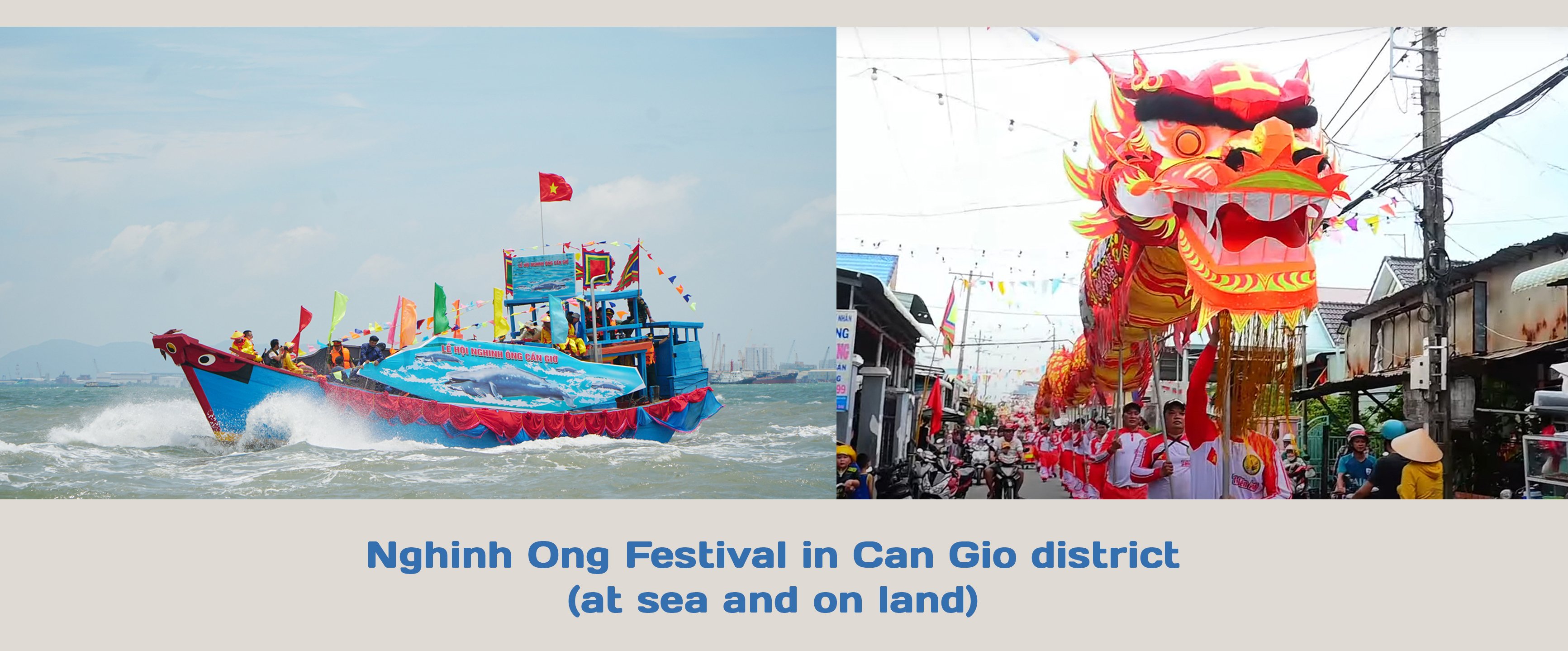
The history of Can Gio district is closely linked to the formation of Ho Chi Minh City. The Rung Sac area of Can Gio was among the earliest landing sites of the Vietnamese during their southward expansion in the 17th century.
As a coastal district divided by a dense network of rivers and canals, Can Gio has, for centuries, seen its residents live in close connection with the river and sea, with traditional livelihoods centered on fishing in the seas and rivers. In recent decades, many Can Gio people have also invested in salt production and aquaculture, primarily farming oysters and shrimp. Swiftlet farming has also been emerging as a growing industry in the district.
With a water-based economy, Can Gio’s fishermen have, for centuries, revered Nam Hai God (respectfully referred to as Whale God) as a protective deity who safeguards them in daily life, especially during offshore fishing trips. Since ancient times, Can Gio’s fishermen have built a temple to the Sea God, known as Lăng Ông Thủy Tướng, to worship Nam Hai God. Over time, the worship of the Whale God gradually transformed into a festival, which locals came to call the Nghinh Ong Festival.
Each year, the Nghinh Ong Festival in Can Gio takes place over three days, from August 15-17 in the lunar calendar, as a city-level event. The main venue is located at Lăng Ông Thủy Tướng (also known as Thạnh Phước Lạch) and at several other key locations, including the Cultural Park at the Rung Sac Revolutionary Base National Historical Site, Can Thanh Communal House, major roads in Can Thanh town, and on the open sea.
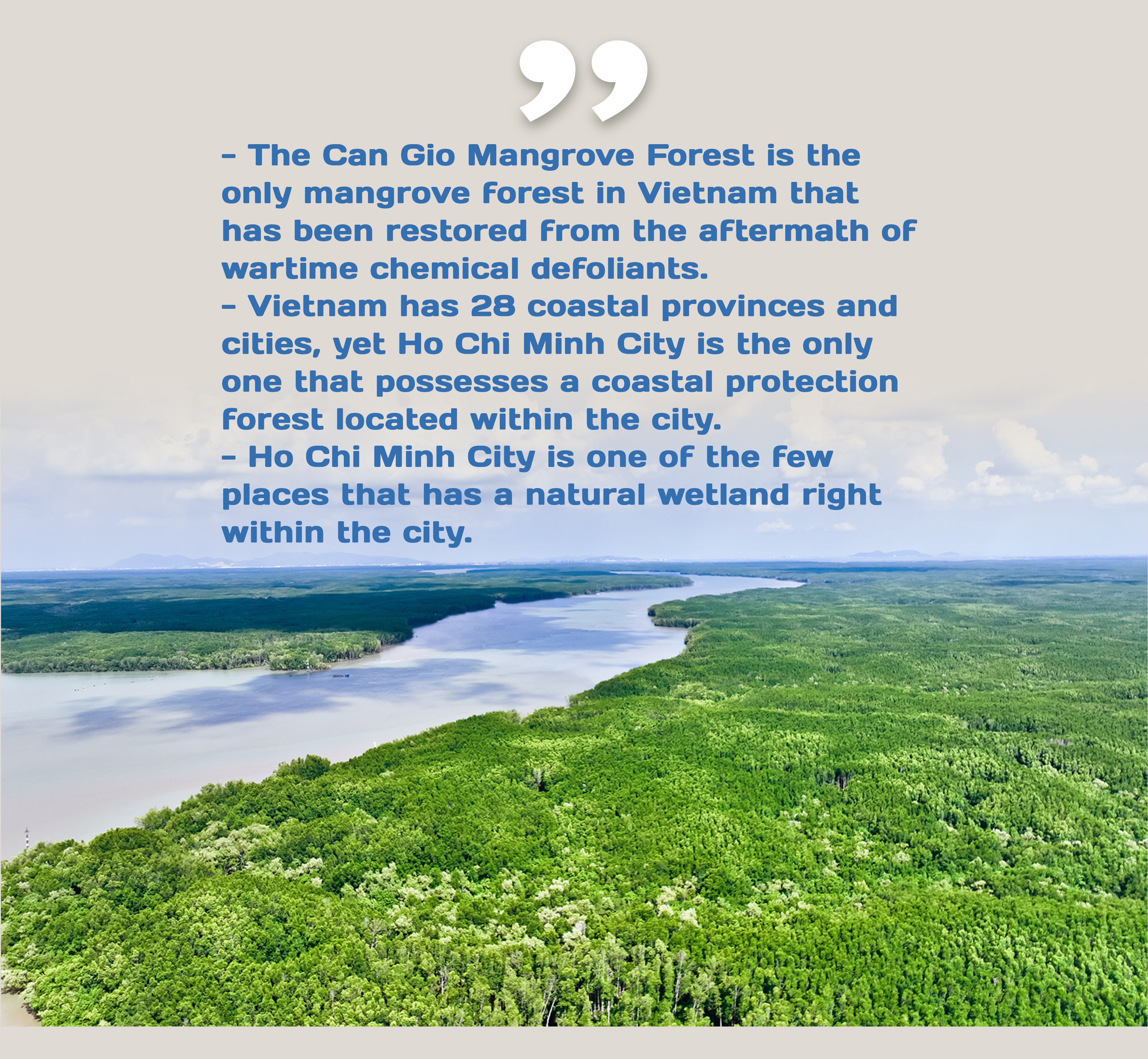
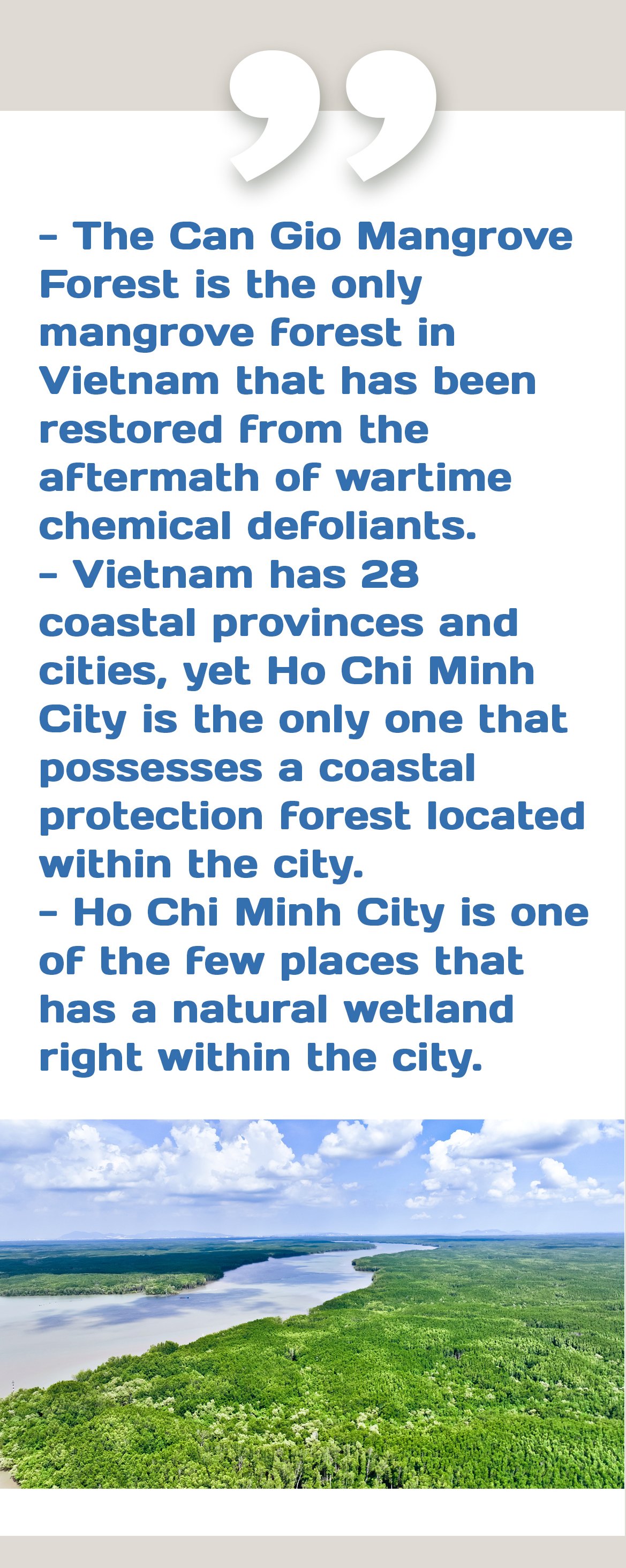
In addition, other worship sites across the district, including Binh Khanh Communal House (Binh Khanh commune), Dong Hoa Communal House (Long Hoa commune), An Thoi Dong Communal House and Thanh An Communal House (Thanh An commune), Tam Thon Hiep Communal House (Tam Thon Hiep commune), An Thoi Dong Communal House (An Thoi Dong commune), and Ba Shrine (Long Hoa commune), also hold Whale God ceremonies on August 15 in the lunar calendar. After the Whale God worship ceremony, all fishermen in Can Gio gather in Can Thanh town to take part in the Nghinh Ong Festival.
According to the Ho Chi Minh City Department of Culture, Sports and Tourism, the Nghinh Ong Festival in Can Gio district shares similarities with the Fisherman's Festival and Nghinh Ong Festival in other southern provinces, yet it also carries distinctive traits in terms of ritual procedures and the timing of the festival, which takes place in the Mid-Autumn Festival. Moreover, the local legends and folktales surrounding the history and development of the Can Gio mangrove region contribute to the festival’s unique cultural identity.
For many years, the Nghinh Ong Festival has been solemnly organized, with its core rituals restored and developed into a major festival for the people of Can Gio district and Ho Chi Minh City, attracting an increasing number of coastal fishermen and visitors each year.
